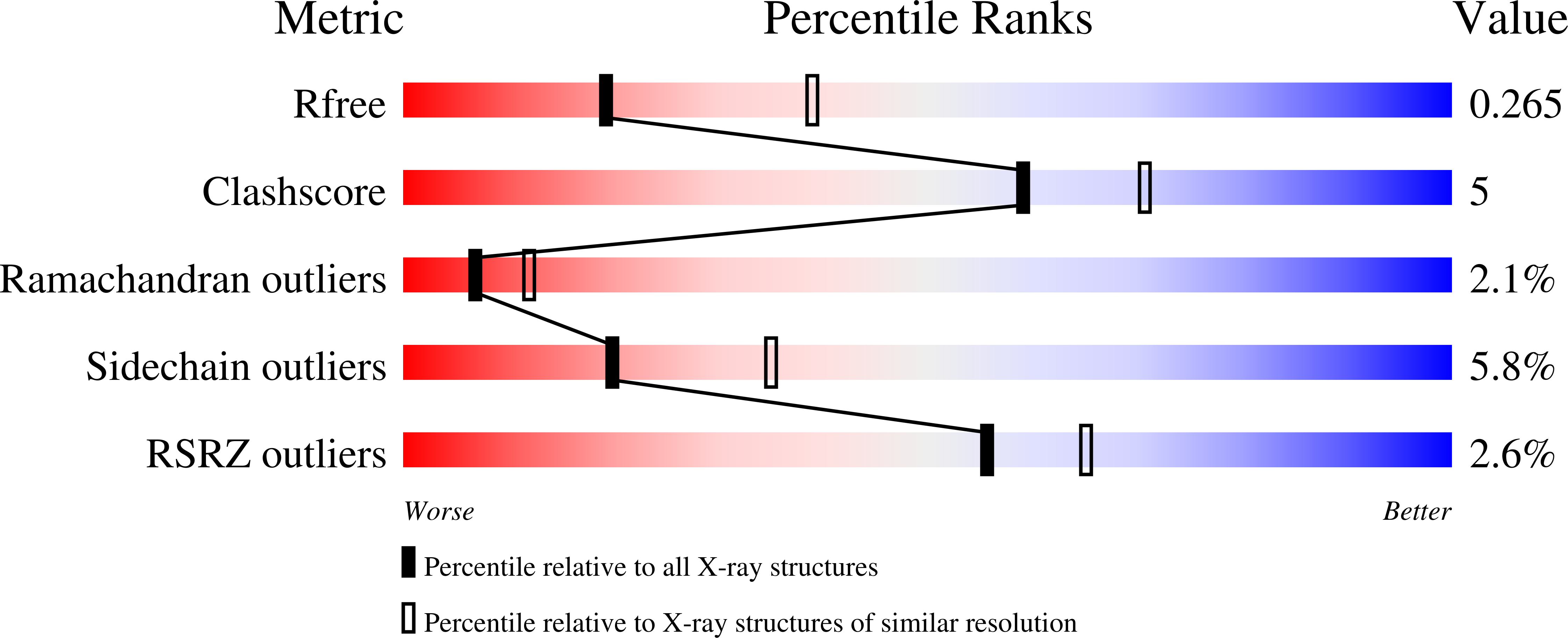Crystal structures of the staphylococcal toxin SSL5 in complex with sialyl Lewis X reveal a conserved binding site that shares common features with viral and bacterial sialic acid binding proteins
Baker, H.M., Basu, I., Chung, M.C., Caradoc-Davies, T., Fraser, J.D., Baker, E.N.(2007) J Mol Biol 374: 1298-1308
- PubMed: 17996251
- DOI: https://doi.org/10.1016/j.jmb.2007.09.091
- Primary Citation of Related Structures:
2R61, 2Z8L - PubMed Abstract:
Staphylococcus aureus is a significant human pathogen. Among its large repertoire of secreted toxins is a group of staphylococcal superantigen-like proteins (SSLs). These are homologous to superantigens but do not have the same activity. SSL5 is shown here to bind to human granulocytes and to the cell surface receptors for human IgA (Fc alphaRI) and P-selectin [P-selectin glycoprotein ligand-1 (PSGL-1)] in a sialic acid (Sia)-dependent manner. Co-crystallization of SSL5 with the tetrasaccharide sialyl Lewis X (sLe(X)), a key determinant of PSGL-1 binding to P-selectin, led to crystal structures of the SSL5-sLe(X) complex at resolutions of 1.65 and 2.75 A for crystals at two pH values. In both structures, sLe(X) bound to a specific site on the surface of the C-terminal domain of SSL5 in a conformation identical with that bound by P-selectin. Conservation of the key carbohydrate binding residues indicates that this ability to bind human glycans is shared by a substantial subgroup of the SSLs, including SSL2, SSL3, SSL4, SSL5, SSL6, and SSL11. This indicates that the ability to target human glycans is an important property of this group of toxins. Structural comparisons also showed that the Sia binding site in SSL5 contains a substructure that is shared by other Sia binding proteins from bacteria as well as viruses and represents a common binding motif.
Organizational Affiliation:
Maurice Wilkins Centre for Molecular Biodiscovery, University of Auckland, Auckland, New Zealand.



















